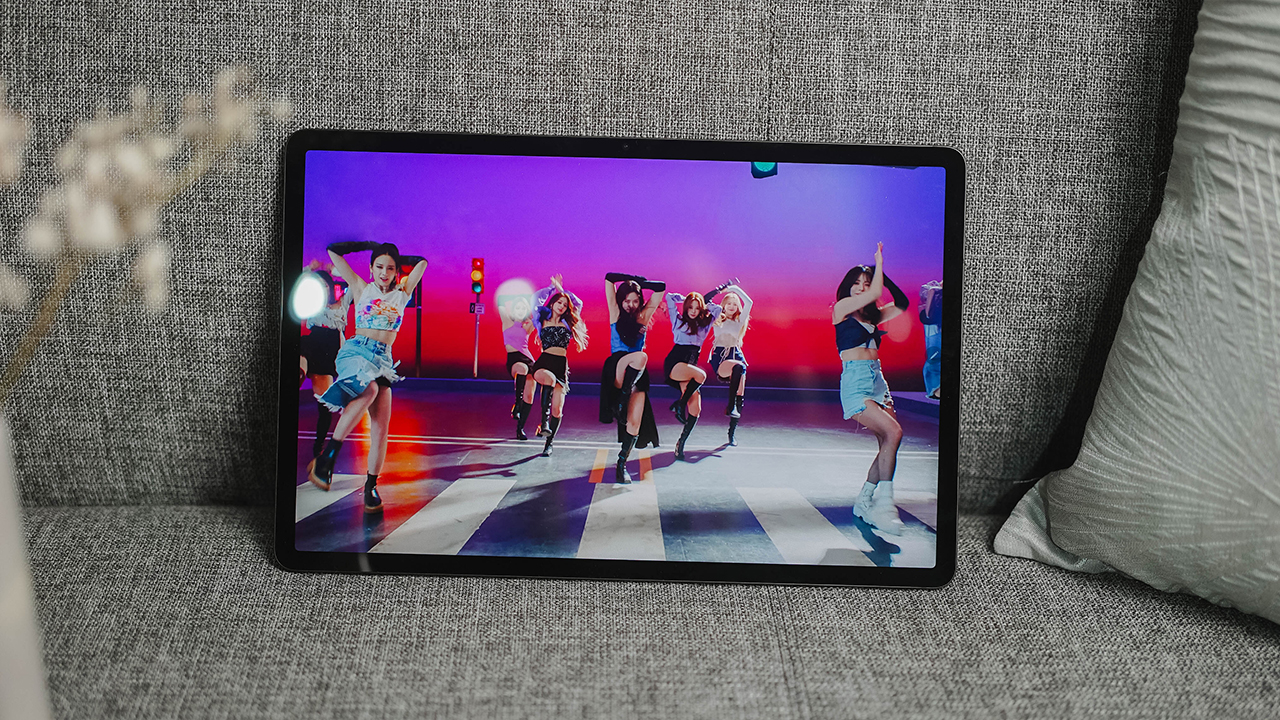News
Samsung Galaxy Tab S8: Price, availability in Singapore
Also three tablets

It’s not just the Samsung Galaxy S22 series that’s coming to Singapore. Samsung also launched the Galaxy Tab S8 series featuring tablets in three sizes — 14.6″, 12.4″, and 11″.
Price and availability
Local pricing has yet to be announced. However, pre-order period will start February 9, 2022 at 11PM. Those who pre-order the Galaxy Tab S8 Ultra 5G will get the Book Cover Keyboard (SG$ 548) and Portable SSD T5 500GB (SG$ 109). Meanwhile, those who pre-order the Galaxy Tab S8 or Tab S8+ will get a pair of Galaxy Buds Live (SG$ 288).
Availability is on March 4, 2022 at local telecomm operators (M1, Singtel, StarHub), Samsung Online Store, Samsung Experience Stores, Samsung Official Lazada and Shopee, and major consumer electronics and IT stores.
Display and power
For display, the starting Tab S8 features an 11-inch LTPS TFT screen with 2560 x 1600 resolution. Meanwhile, the Tab S8+ will have a 12.4-inch sAMOLED screen with 2800 x 1752 resolution. Finally, the Tab S8 Ultra will sport a 14.6-inch screen sAMOLED screen with 2960 x 1848 resolution and 120Hz refresh rate.
The series will sport the new Exynos 2200 chipset. While the two starting models — the Galaxy Tab S8 and the S8+ — will have 8GB of RAM and 256GB of internal storage, the Tab S8 Ultra will have up to 16GB of RAM and up to 512GB of internal storage. All three models are compatible for storage expansion up to 1TB more through a microSD slot.
For battery, the starting model will have an 8000mAh battery. The second model will have a 10090mAh battery. Finally, the Tab S8 Ultra will have a sizable 11200mAh battery. They all support 45W super-fast charging which can charge the series to full in only around 90 minutes.
Shooting and productivity
Either side of the devices can shoot up to 4K video with powerful rear cameras and ultra-wide front cameras. Inside, the tablets have LumaFusion’s editing tools which can optimize videos for both content creators and streamers.
The tablets feature an improved multi-window mode, allowing users to multitask their different tasks throughout the day. Additionally, the series sports the S Pen with ultra-low latency and an exclusive partnership with Clip Studio Paint.
The Tab S8 series will use repurposed ocean-bound plastic within its components.

News
Xiaomi Redmi A3 Philippine pricing, availability
Budget smartphone with high refresh rate display

Xiaomi is bringing high refresh rate displays to its budget line with the announcement of the Redmi A3. The latest addition to the entry-level Redmi line boasts of an expansive 6.71-inch HD+ display with up to a 90Hz refresh rate.
The Redmi A3 is available in Midnight Black, Star Blue, and Forest Green. The smartphone is priced at PhP 3,399 (3GB+64GB) and PhP 3,999 (4GB+128GB) respectively for its two configurations.
Customers may preorder the phone until April 27 via Lazada, Shopee, and TikTok. General sale begins April 26th in all Xiaomi stores nationwide. Freebies are a Basic Piston Earphone for online purchases and a 3-month Viu Premium subscription for in-store purchases.
The Redmi A3’s immersive screen allows users to consume various content in high-definition with better smoothness, a boost for a phone of its price point. The screen has Corning Gorilla Glass 3 protection as well, and DC dimming to reduce blue light exposure.
The phone also sports a refined design that lets go of the iPhone-looking camera arrangement. Instead, the main camera is now in the middle as part of a watch face-looking setup similar to other Android phone offerings.
Speaking of, an 8MP main shooter highlights the back of the Redmi A3. In front is a 5MP front camera. The phone is powered by a MediaTek Helio G36 processor and runs on an Android 14-based OS. Furthermore, it has a 5,000mAh battery with 10W of USB-C charging.
Other handy Redmi A3 features for users to utilize include a 3.5mm jack, Face Unlock, and Fingerprint Unlock.
For the longest time, Google kept Pixel and Android behind two different teams. While the Pixel team dealt with devices made by and for the brand, the Android team ships a product meant for brands outside of the company’s purview. However, the days of separation are at an end. Google is officially merging its Pixel and Android teams together.
In a shocking announcement, the company has confirmed that the teams handling hardware and software will fall under a single team headed by Rick Osterloh. Prior to the merge, Osterloh was the senior vice president of devices and service, which was Google’s hardware branch. He will now oversee both hardware and software.
Because of the new leadership change, Hiroshi Lockheimer, former head of Android, will now move on to other projects within Alphabet. Of note, the change is not harsh for Lockheimer. He and Osterloh had been contemplating on the merge for a while.
Now, why the change? As is the case with everything today, it’s all because of AI. Speaking to The Verge, Osterloh explains that the merge will help with “full-stack innovation.” With how technology is these days, it’s now impossible to develop AI without having a close eye on hardware, such as in Google’s AI developments for the Pixel camera. Merging the teams will help streamline development, especially when hardware is involved.
Despite the change, outside brands, like Qualcomm’s Cristiano Amon, remains confident of Android’s capabilities outside of Google. Just expect more AI coming out in the near future.
Since the Pixel 6 series, Google continues to wow the market as one of the most unique camera designs available in the market today. This year, the brand’s Pixel 9 series might reinvent itself again with a slightly updated redesign.
Between the Pixel 6 and Pixel 8 series, Google introduced a wraparound camera island extending from the left edge to the right edge. While most smartphones today still use the traditional top-left island layout, Google’s lineup consistently grabs admiration from onlookers.
Now, according to an early leak (from Rozetked, via 9to5Google), Google might cut the camera island’s size before it reaches either side of the Pixel 9. The remaining chunk looks like a horizontal pill-shaped camera island right in the middle of the rear panel. It looks like a common camera island comically enlarged and turned on its side. Alternatively, it also looks like a webcam attached to a phone.
Based on the new leak, the new camera island will have three unknown lenses, the usual LED flash, and an unconfirmed sensor. Besides the different camera, the leak also confirms the usual tray of hardware on the side. There’s nothing too revolutionary.
As always, the Pixel 9 series is scheduled to come out in the fall of this year.
SEE ALSO: Pixel 9 series will reportedly come in four models
-

 Features1 week ago
Features1 week agoFortify your home office or business setup with these devices
-

 Events2 weeks ago
Events2 weeks agoStellar Blade: PlayStation taps cosplayers to play Eve for game’s launch
-

 Gaming2 weeks ago
Gaming2 weeks agoThe Rogue Prince of Persia looks like an ultra-colorful roguelite
-

 Accessories2 weeks ago
Accessories2 weeks agoLogitech unveils G Pro X 60 gaming keyboard: Price, details
-

 Gaming2 weeks ago
Gaming2 weeks agoStar Wars Outlaws release date revealed
-

 Reviews1 week ago
Reviews1 week agorealme 12+ 5G review: One month later
-

 Gaming2 weeks ago
Gaming2 weeks agoLenovo confirms development of a Legion Go 2
-

 Deals2 weeks ago
Deals2 weeks agoTCL P635 TV: Big savings for TCL’s anniversary

























